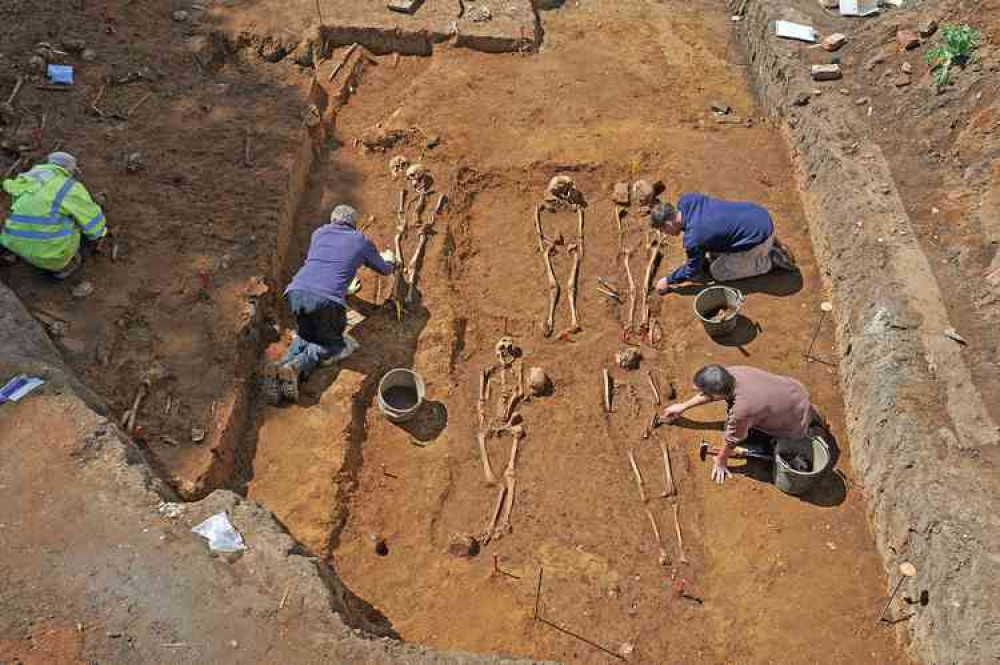New exhibition unearths the secrets of Godalming's Saxon cemetery
By The Editor 31st Aug 2020
By The Editor 31st Aug 2020



Godalming Museum curator Alison Pattison writes about a new exhibition telling the story of the remarkable survival, discovery and excavation of a unique archaeological site.
In 2014 the Surrey County Archaeological Unit was called in to excavate a site opposite Godalming Parish Church. There had been earlier reports of human bones found there, but no-one expected the scale of the archaeologists' discovery.
Over the next few months, working to strict Home Office protocols, they excavated the remains of almost 400 individuals. The bones were radio-carbon dated to around 850-1200 and the burials were evidently Christian; it was clear that this was Godalming Parish Church's earliest burial ground.
It had previously been assumed that the graveyard had always been where it is now, around and to the east of the church, and that the earliest burials would have been displaced in the course of later interments, as is generally the case.
Now it was realised that the cemetery had begun on a separate site to the south and that the gardens of houses later built in Church Street and Mint Street had preserved a unique time capsule of evidence for the lives and deaths of generations of Godalming's early inhabitants.
The skeletal material is now in the care of the University of Roehampton, where it is the subject of ongoing research, the initial findings of which are included in the exhibition. The display also explores the early history of the town in the light of the archaeologists' discoveries.
You can book to see the exhibition, which is open on Mondays and Fridays, from September 7th to October 16th, by calling 01483 426510. People unable to phone are asked to email.
CHECK OUT OUR Jobs Section HERE!
godalming vacancies updated hourly!
Click here to see more: godalming jobs
Share: